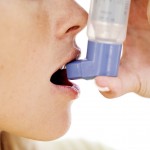Asthma Treatment
 As in previous article of mine, I promised to bring some effective drugs which are found very helpful in asthma treatment, these are here. These drug groups have been used successfully in medical field and are giving very beneficial results. Yes, there are certainly side effects with each group, depending upon the nature and concentration of these drugs. For prevention from these side effects, some extra medication is given in severe cases; anyhow such cases are found less in ratio.
As in previous article of mine, I promised to bring some effective drugs which are found very helpful in asthma treatment, these are here. These drug groups have been used successfully in medical field and are giving very beneficial results. Yes, there are certainly side effects with each group, depending upon the nature and concentration of these drugs. For prevention from these side effects, some extra medication is given in severe cases; anyhow such cases are found less in ratio.
As far as reasons of asthma are concerned, one if the biggest is counted as inheritance. This is family disease which is transferred to generations after generations through family genes. If a pregnant woman is suffering from asthma, the born infant will surely be a victim of the same disease. Therefore condition of these chronic patients is often more severe than those individuals who get it by any other reason. Though continuous research is carried in this field to bring some more magical drug groups in practice, but those which are already in practice are given below.
The selective beta2 agonists (selective beta2-adrenoceptor agonists, selective beta2 stimulants) such as salbutamol or terbutaline are the safest and most effective short-acting beta2 agonists for asthma. Less selective beta2 agonists such as orciprenaline should be avoided whenever possible. Adrenaline (epinephrine) (which has both alpha- and beta-adrenoceptor agonist properties) is used in the emergency management of allergic and anaphylactic reactions
Ipratropium can provide short-term relief in chronic asthma, but short-acting beta2 agonists act more quickly and are preferred. Ipratropium by nebulization can be added to other standard treatment in life-threatening asthma or if acute asthma fails to improve with standard therapy. The aerosol inhalation of ipratropium can be used for short-term relief in mild chronic obstructive pulmonary disease in patients who are not using a long-acting antimuscarinic drug. Its maximal effect occurs 30–60 minutes after use; its duration of action is 3 to 6 hours and bronchodilation can usually be maintained with treatment 3 times a day.
Theophylline is a bronchodilator used for asthma and stable chronic obstructive pulmonary disease; it is not generally effective in exacerbations of chronic obstructive pulmonary disease. It may have an additive effect when used in conjunction with small doses of beta2 agonists; the combination may increase the risk of side-effects, including hypokalemia.
Theophylline is metabolized in the liver; there is considerable variation in plasma-theophylline concentration particularly in smokers, in patients with hepatic impairment or heart failure, or if certain drugs are taken concurrently. The plasma-theophylline concentration is increased in heart failure, cirrhosis, viral infections, in the elderly, and by drugs that inhibit its metabolism. The plasma-theophylline concentration is decreased in smokers and in chronic alcoholism and by drugs that induce liver metabolism.
Corticosteroids are effective in asthma; they reduce airway inflammation (and hence reduce edema and secretion of mucus into the airway).An inhaled corticosteroid is used regularly for prophylaxis of asthma when patients require a beta2 agonist more than twice a week, or if symptoms disturb sleep more than once a week, or if the patient has suffered exacerbations in the last 2 years requiring a systemic corticosteroid or a nebulized bronchodilator. Regular use of inhaled corticosteroids reduces the risk of exacerbation of asthma.
Corticosteroid inhalers must be used regularly for maximum benefit; alleviation of symptoms usually occurs 3 to 7 days after initiation. Beclometasone dipropionate, budesonide, fluticasone propionate, and mometasone furoate appear to be equally effective. Preparations that combine a corticosteroid with a long-acting beta2 agonist may be helpful for patients stabilized on the individual components in the same proportion. Patients taking long-term oral corticosteroids for asthma can often be transferred to an inhaled corticosteroid but the transfer must be slow, with gradual reduction in the dose of the oral corticosteroid, and at a time when the asthma is well controlled.
The mode of action of sodium cromoglicate and nedocromil is not completely understood. They may be of value in asthma with an allergic basis, but, in practice, it is difficult to predict who will benefit; they could probably be given for 4 to 6 weeks to assess response. Dose frequency is adjusted according to response but is usually 3 to 4 times a day initially; this may subsequently be reduced. The leukotriene receptor antagonists; montelukast and zafirlukast, block the effects of cysteinyl leukotrienes in the airways. They are effective in asthma when used alone or with an inhaled corticosteroid.
In severe cases, patients should never be experimented with the same medication as they may need some emergency treatment at the moment, so never delay taking such cases to hospital. Urgent emergency treatment will surely bring a momentary relief to them and it is often found, patient feels much better and starts breathing normally for some time.
By: Ammarah Khan




Hello just wanted to give you a quick heads up and let you know a few of the pictures aren’t loading correctly. I’m not sure why but I think its a linking issue. I’ve tried it in two different browsers and both show the same outcome.
I simply want to tell you that I’m beginner to weblog and truly loved this blog site. More than likely I’m planning to bookmark your site . You amazingly come with good articles. Appreciate it for revealing your website.
I just want to tell you that I’m new to blogging and site-building and certainly savored this website. Most likely I’m likely to bookmark your blog . You certainly have excellent articles and reviews. Thanks for sharing with us your website.